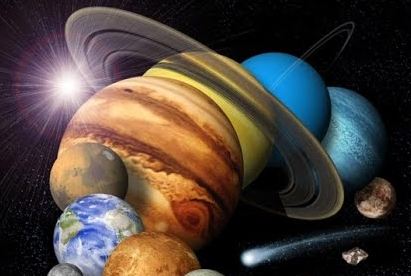Facts of Planets of Solar System – Smallest, Biggest, Hottest, Coldest, Densest
Some important common facts about planets of Solar system or Universe which all should to remember. Here in this post all those important plane facts are discussed in detail. Take time and read:
- Planets don’t have their own light. They take light from the Sun.
- Direction of Movement: All planets except Venus and Uranus move in the direction from West to East. Venus and Uranus move in other direction that is from east to west.
- Path: All planets of universe revolve around the Sun in elliptical path. Time taken by the planets to complete one revolution and rotation depends upon various factors such as orbit, size, speed and many others.
- Planets are revolved by the satellites and Jupiter(Biggest planet of Universe) has 63 satellites, maximum number of satellites as compared to any other planet’s Satellite.
- Our Earth is having only one satellite Moon, which we can see in nights mostly.
- Mercury and Venus are the two planets of the universe with no satellites. These two planets (Mercury and Venus) are also called inferior planets because of their distance from the sun(Closest to Sun).
- All other planets are called superior planets because of their larger distance from the Sun.
Inferior Planets:
Mercury and Venus
Superior Planets:
Mars, Jupiter, Saturn, Uranus and Neptune
Also Read: Trick to Remember Planets of Universe, Solar System
Classification of Planets, Dwarf Planets, Inner & Outer Planets
The Planets of the solar system can also be divided depending upon their positions as:
Inner Planets – Mercury, Venus, Earth and Mars are the inner planets of Solar system.
Outer Planets – Jupiter, Saturn, Uranus and Mars are called as the Outer planets of solar system.
Summary of Facts related to Planets of Solar System
Biggest Planet: Jupiter
Smallest Planet: Mercury
Hottest Planet of Universe: Venus
Coldest Planet: Neptune
Blue Planet: Earth (Because of presence of water, Earth looks blue from sky)
Green Planet: Uranus
Brightest Planet: Venus
Evening Star: Venus
Morning Star: Venus
Nearest planet to Earth: Venus
Nearest Planet to Sun: Mercury
Earth’s Twin: Venus(Both have almost similar size)
Densest Planet of solar system : Earth
Planet having Fastest Revolution: Mercury
Planet with Slowest Revolution: Neptune
Planet with Fast Rotation: Jupiter
Planet with Slowest Rotation in solar System: Venus
This was most important information related to planets of Solar System. This information above is most generally asked in general knowledge part of the government exams. Read it and keep in mind. If you have any query or suggestion, do write in comment section below.

